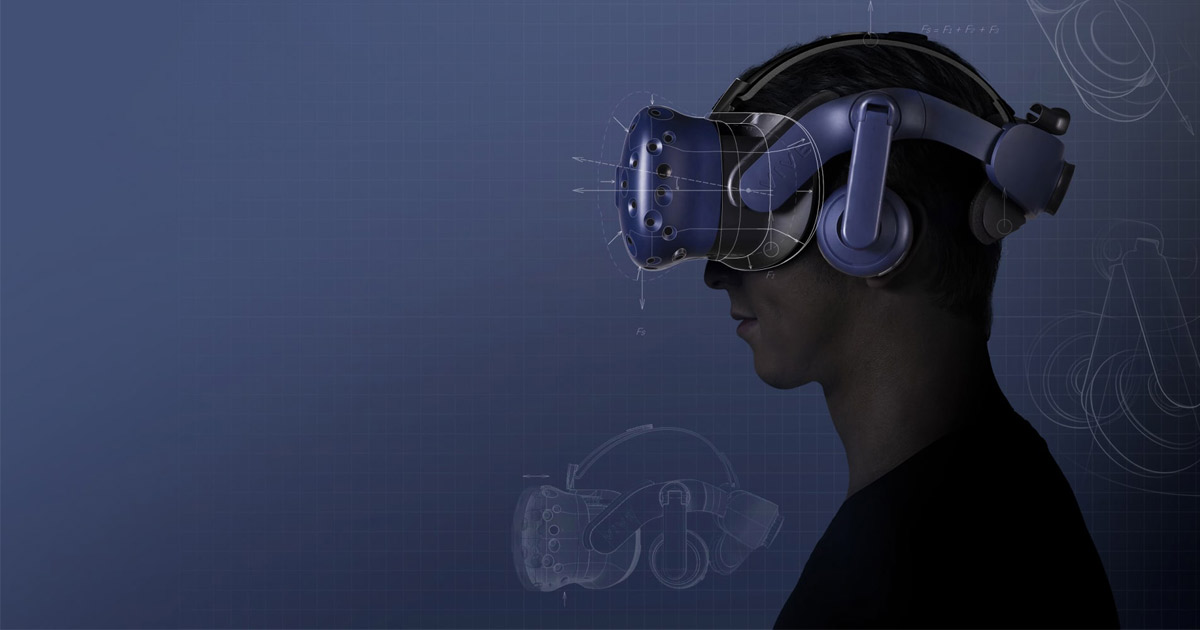HTC has launched its next Vive VR headset, the Vive Pro, after a gap of almost 2 years. The old Vive VR will continue selling throughout 2018, and the Vive Pro will arrive sometime later in Q1 2018 for a yet unspecified price. Here are 5 things that HTC has improved on the new Vive Pro.
Also Read: Google ARCore SDK For Augmented Reality Apps Announced
HTC Vive Pro VR Specifications
| Model | HTC Vive VR Pro Headset |
| Screen | Dual AMOLED 3.5-inch
1440 x 1600 pixels per eye (2880 x 1600) |
| Refresh rate | 90 Hz |
| Field of view | 110 degrees |
| Audio | Hi-res certified headset, integrated microphones |
| Connectivity options | USB-C 3.0, DP 1.2, Bluetooth |
| Sensors | StreamVR tracking, G-sensors, Gyroscope, Proximity, IPD sensor |
| Design | Lens distance adjustment, Adjustable IPD, Adjustable head strap, Adjustable headphones |
| Price | To be announced |
Higher Resolution
The biggest change is 78 percent increase in the dual OLED display resolution (37 percent increase in pixel density). The Vive Pro displays have 2880 x 1600 pixels (1400 x 1600 per eye) compared to 2160 x 1200 pixels (1080 x 1200 per eye) in the last iteration. This gives Vive Pro a lead over rival VR competitors like Oculus Rift and will help with smoother graphics and crispier texts.
The field of view (110-degree) and refresh rate (90Hz) remain same.
Redesigned Strap and Face cushion
Another focus area is the comfort. HTC has redesigned the strap of the Vive VR for more comfort. It now has a Sizing dial to facilitate a more balanced fit. The new chassis evenly distributes the weight of the headset and the 24 percent increase in Face Gasket surface area helps lower face stress.
The new nose pad and face cushion has a “Flower petal-inspired design” that enables it to fit better on all nose shapes in order to block more light.
Headphones built-in
The Vive Pro VR headset strap will have headphones with an integrated amplifier built in so that you have to worry about one less cable hindering your VR experience. The headphones are Hi-res certified and support 3D spatial sound.
These headphones are removable if you’d rather use your own.
Dual Microphone and Dual front cameras
The Vive VR Pro has two noise cancellation headphones for cleaner audio experience and also have double on the front cameras that developers can put to good use. HTC didn’t mention any direct practical use of the second camera for consumers. The extra camera is perhaps also being used to improve position tracking.
Supports four base station
Vive Pro now supports up to 4 base stations for improved room tracking. The existing base stations will be compatible too. This will help expand your play area to 10 meters diagonally from 5-meters and also help improve Vive Chaperone system (that prevents you from bumping into walls while playing VR games).
Vive Wireless adaptor and Type-C port
HTC also introduced its Vive Wireless adaptor that will be available in mid-2018. The new adaptor works on Intel’s Wi-Gig technology that uses the 60Hz band for communication to help avoid interference. With the new adapter, you won’t have to connect cables directly to your PC and can experience more freedom of movement. On the downside, this would involve a battery that would need charging.
The default data connection port will now change from Type-A to Type-C (USB 3.0).
Vive Pro VR – All that has changed
So, basically, the Vive VR Pro primarily offers a significantly higher resolution display apart from some incremental upgrades. HTC hasn’t announced the price of Vive Pro or its availability dates yet.
